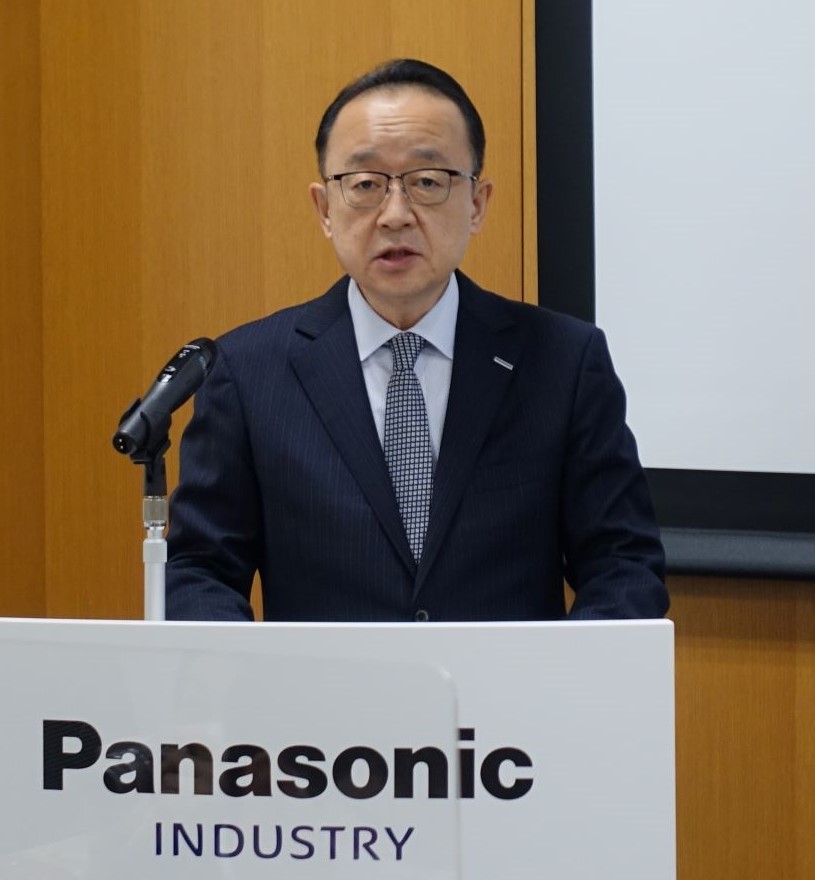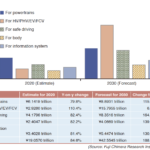ASIA ELECTRONICS INDUSTRYYOUR WINDOW TO SMART MANUFACTURING
Key Businesses Seal Panasonic Industry’s Future Growth
Industry Company, Panasonic Corporation targets to achieve sales of at least 1.8 trillion yen (US$16 billion) in fiscal 2030. For fiscal 2021, it aims to achieve sales of 1.1 trillion yen (US$9.7 billion) or 15 percent of Panasonic’s total sales. The company will focus on top business lines to attain the additional 700 billion yen (US$6.2 billion) to FY2030. It sets sights on factory automation (FA) solutions, electronic materials, and capacitors as three core businesses that will drive growth. Sales of each business segment will be increased to 300 billion yen (US$2.6 billion), which is about 2.5 times the current sales.
Shinji Sakamoto, Chief Executive Officer of Industry Company and Senior Managing Executive Officer of Panasonic announced these targets on Nov. 19 at its Headquarters in Osaka. The company will transition into a holding company beginning April 2022.
“In the last few years, efforts to reorganize the portfolio and reduce fixed costs have greatly improved profitability. In the future, we will move to strengthening growth potential with profits,” said Sakamoto.
The target of 1.8 trillion yen has been increased from an initial target of 1.5 trillion.

20% Target Operating Margin
The company has recorded an operating profit margin of 10 percent during the first half of FY2021. It forecasts an operating profit margin of 8 percent for the full fiscal year. For the medium to long term, Sakamoto said, “We will confine ourselves to businesses for which we can make the best use of our characteristics and promote a management focusing on the top line. The double-digit operating margin is just the start. We aim for 20 percent for devices produced using in-house parts and 10 percent for device assembly using parts supplied by other companies.”
High Growth Areas
The company will focus on businesses with high growth and profit potential in the next few years. They include FA products, like industrial motors and sensors; electronic materials, like board materials and functional materials; and electric vehicle (EV) relay and cutoff units, and passive components, like functional capacitors.
The company has completed the withdrawal of projects based on the following classifications: commoditized areas of optical pickups and optodevices, LCDs, general power supplies, and semiconductors, circuit boards, SAW devices with low market potential. As a result, the adjusted operating profit margin has increased 7 points, fixed costs have been reduced 30 percent. Also, the composition ratio of focused businesses has been increased from 50 to 80 percent compared to seven years ago.
The nine years covering FY2022 to 2030 will be the stage for strengthening growth potential with its core businesses driving the growth.
Core Businesses
FA Solutions
In the field of the FA solutions, the company will expand local production for local consumption in China. It will leverage the strengths of high-precision servo motor technology and top share of small servos in China. The company will establish a system to support small and medium-sized machine builders by proposing a simple package of industrial motor + sensor + software.
Electronic Materials
For electronic materials, the company will acquire a new material technology with leading low-loss and high heat-resistance technologies and high-speed transmission boards. The company will lead the evolution of advanced semiconductor packages by proposing a combination of multiple semiconductor materials. It will also promote collaborations and mergers and acquisitions.
Capacitors
The company’s capacitors lead the market for their highly reliability and conductivity achieved by unique materials and process technology. The company will promote the development of design and production process through industry-academia collaborations. It will develop new storage applications for automotives and data centers with super capacitors having larger capacity.
Provide Outstanding Value
“The company is faced with labor cost reduction, information and communication infrastructure, and the automotive CASE, where social demands are strong and continuous evolution is required. The company will provide products with outstanding value for customers based on its unique materials and process technologies,” said Sakamoto.
It will also focus on environmental initiatives and aim for carbon neutrality with virtually zero CO2 emissions by 2030. The company will convert the production activity in the overseas assembly factories into carbon neutral, followed by factories in Japan. “Our products will contribute to the reduction of environmental load by changing features, like miniaturization, weight reduction, lower loss, and higher durability,” said Sakamoto.
Panasonic Industry will continue to contribute to society through its device technologies with the theme “Your Committed Enabler”.




